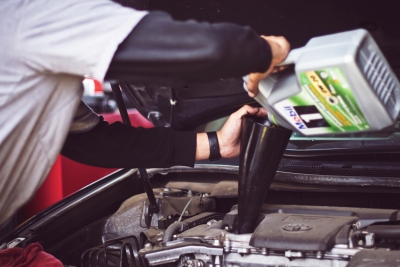Solving the Fuel Efficiency Puzzle: Factors that Impact Your Commercial Vehicle's Gas Mileage
Top Ten Ways to Improve Semi-Truck Fuel Efficiency
New semi-truck emissions regulations, along with higher fuel costs, have trucking fleet operators looking harder for additional ways to gain fuel efficiency.
Record costs for fleets have come in the form of driver pay increases and a jump in repair and maintenance costs, but nothing has been more costly than the rising price of diesel. The American Transportation Research Institute reports that fleet operators saw a more than 35 percent increase in fuel prices last year, bringing per-mile trucking costs to their highest levels on record.
Now the Biden administration has proposed new emissions regulations that put the transportation industry at the center of attention, with goals to speed up the path to zero-emission semi-trucks and stringent new standards to reduce pollution.
But, there are many ways to increase fuel efficiency and reduce fuel costs, including quick and easy options that bring immediate results.
Semi-Truck MPGs at a Glance

Most semi-trucks have one or two fuel tanks that hold up to around 300 gallons of gas combined.
On average, semi-trucks get anywhere from 5.6 miles per gallon (mpg) to about 6.5 mpg. That fuel efficiency can range more widely when trucks are climbing steep uphill grades, which can push fuel efficiency down to 3 mpg, or coasting downhill when fuel efficiency can top 23 mpg. On a long route, fuel is consumed quickly and refueling is always top of mind for drivers.
In the last year, diesel fuel prices have spiked dramatically. Filling up used to cost around $300 to $400, but it can now cost over $1,000 to fill up the same Class 8 truck. Earlier this year the price of diesel fuel jumped by more than $1.50 per gallon in roughly two months, surpassing $6 per gallon in some markets. Since last year, truck fleets' fuel spending has increased by around 25 percent to 30 percent. According to the American Trucking Associations, semi-trucks burn about 36.5 billion gallons of diesel annually.
New Standards for GHG Emissions Loom
The EPA announced a proposal on April 12, 2023, to revise existing standards to reduce greenhouse gas emissions from heavy-duty vehicles for 2027, and set new, more stringent standards for model years 2028 through 2032. This proposed program, called "Phase 3 greenhouse gas," builds upon the success of two previous rulemakings, Phase 1 greenhouse gas, and Phase 2 greenhouse gas, which have already reduced greenhouse gas emissions from heavy-duty vehicles and engines.
The Phase 3 greenhouse gas standards will apply to heavy-duty vocational vehicles such as delivery trucks, refuse haulers, public utility trucks, transit, shuttle, school buses, and tractors such as day cabs and sleeper cabs on tractor-trailer trucks. This proposal complements EPA's recently-finalized standards to control air pollution from new heavy-duty engines and vehicles and EPA's proposed rule addressing multi-pollutant emissions for model years 2027 and later light-duty and medium-duty vehicles.
These three actions align with the "Clean Trucks Plan." By implementing these new standards, we can work towards a more sustainable future that prioritizes reducing the environmental impact of our transportation systems.
Best Ways to Gain Fuel Efficiency
From simple and immediate, to long-term and lucrative, there are many ways to get better gas mileage in a truck. Here are ten top ways to gain fuel efficiency.
- Use Cruise Control – Inconsistent speed can be a common cause of poor mileage. Using cruise control regulates speed and creates more efficiency.
- Avoid Idling – Idling is a waste of gas. Find easy ways to stop idling, including using truck stop showers while waiting in line.
- Keep Up on Maintenance – Make sure trucks receive regular maintenance checks as recommended by the manufacturer. Consider using a lower-viscosity oil.
- Improve Truck Aerodynamics – There are a number of products on the market that can improve truck aerodynamics and significantly reduce fuel costs, including TruckWings, which close the gap between the cab and trailer to reduce drag. Other aerodynamic devices include wheel covers, roof farings, and side extenders.
- Plan Ahead – Pre-plan your trip to avoid unnecessary stops and use the latest GPS equipment to keep routes accurate.
- Lighten the Load – Reduce excess weight by removing unnecessary cargo or equipment. Every extra pound counts.
- Don’t Speed – Drive at the posted speed limit or slightly below. This cuts down on wind resistance which, in turn, cuts down on fuel consumption.
- Easy on the Brakes – Use momentum to your advantage and avoid sudden accelerations and excessive braking, which increase fuel consumption.
- Use Low-Rolling Tires – Low-rolling resistance tires made for trucks require less energy to move and can cut down on fuel use.
- Minimize AC Use – When and where possible, cut back on how much the AC is used. Air conditioning can be another drag on fuel use.
Get Started Today
Pressure from rising fuel prices and driver shortages, along with new legislation aimed at reducing emissions produced by trucks, is giving fleet owners and operators a lot to think about. But easy solutions and smart steps can make a big difference almost immediately. Using fuel efficiency measures can add up quickly and provide relief.
TruckWings can help fleets reduce drag and cut fuel costs by 3% to 6% annually, which can be thousands of dollars in savings per truck, leading to millions of dollars per fleet.
TruckWings is the only fully automated aerodynamic device that works without driver interaction. Drivers can count on it to deploy when speed goes above 52mph, and retract when speed goes below 50mph. So there’s no need to take their eyes off their driving or their hands off the wheel. Closing the gap reduces buffeting and trailer sway in cross-winds outperforming even the longest side-extenders on the market today.











